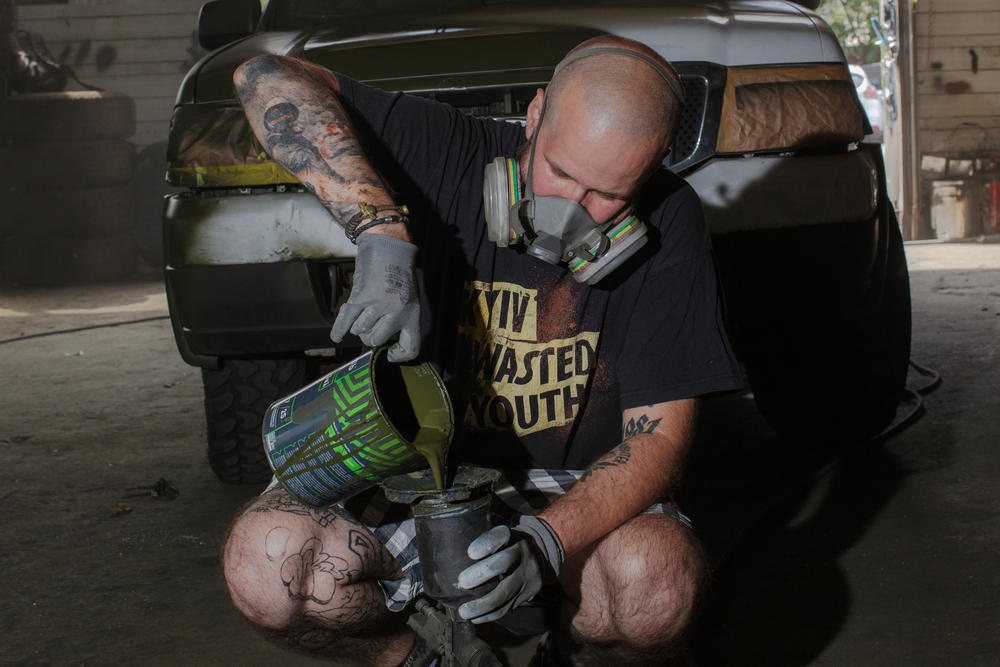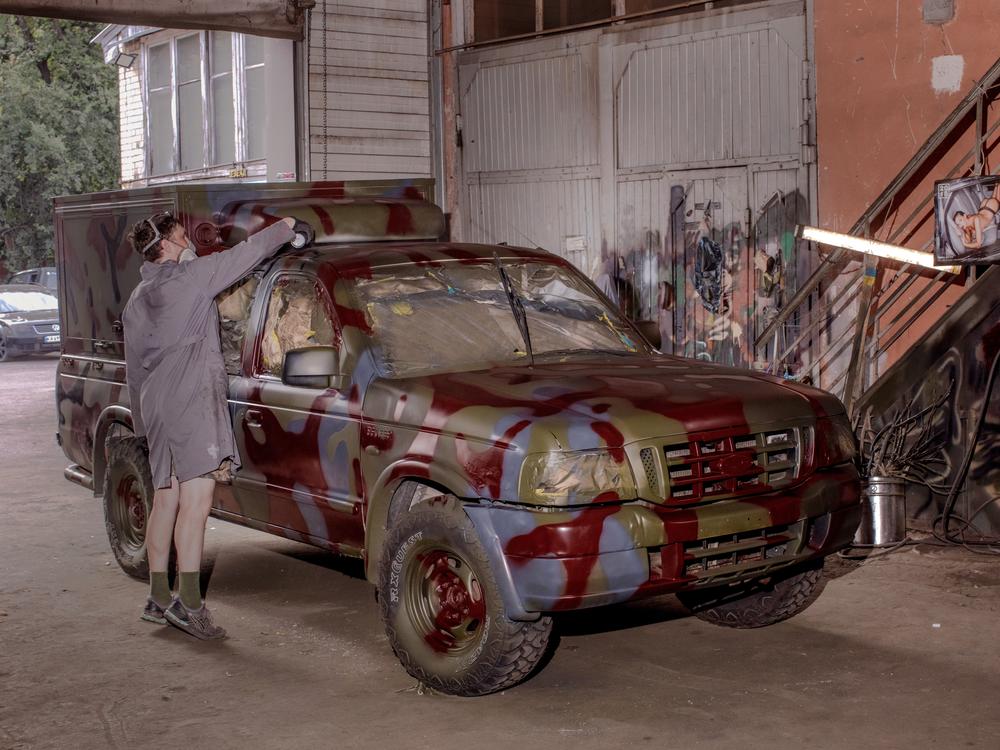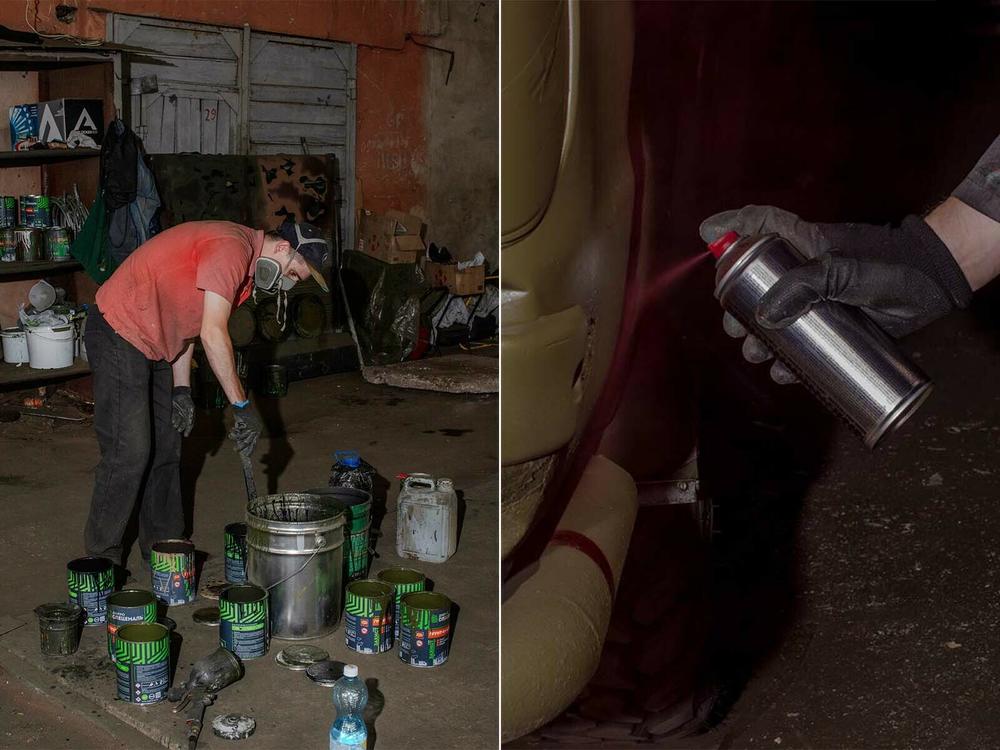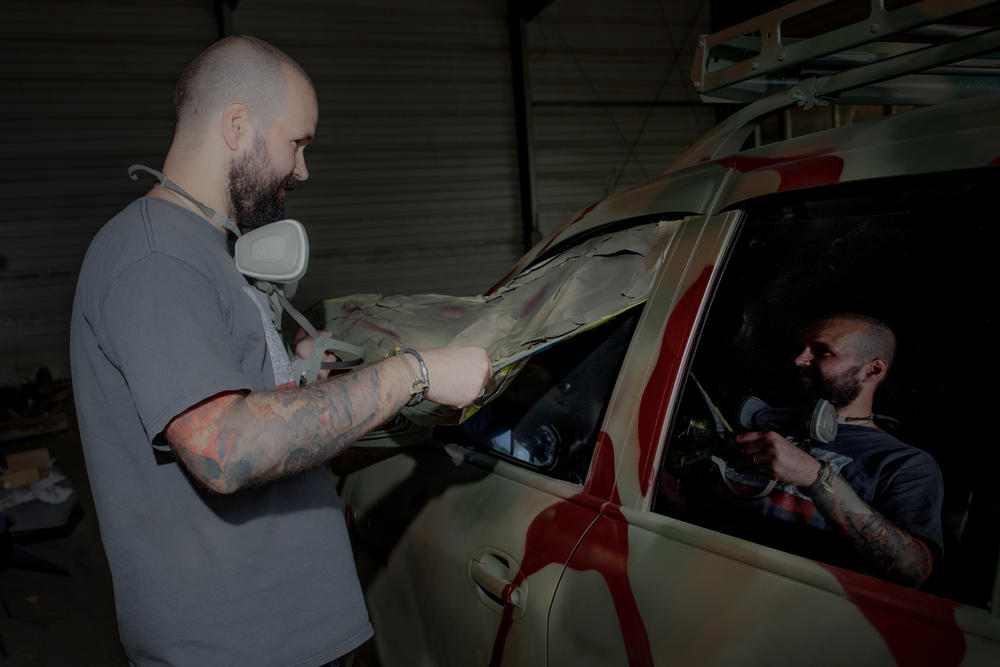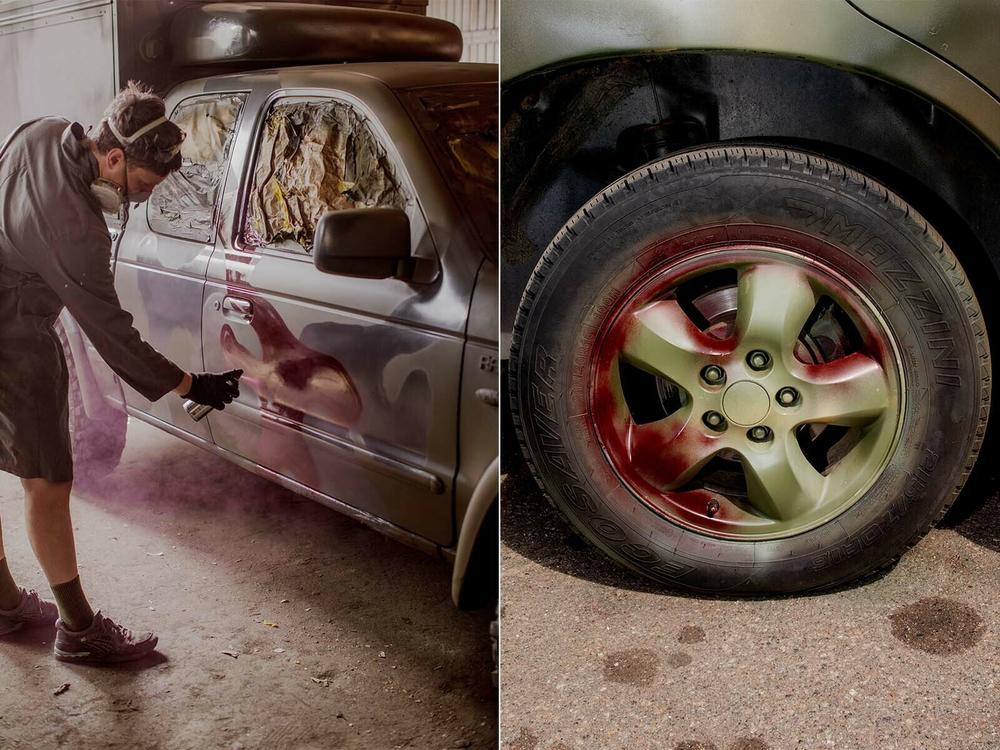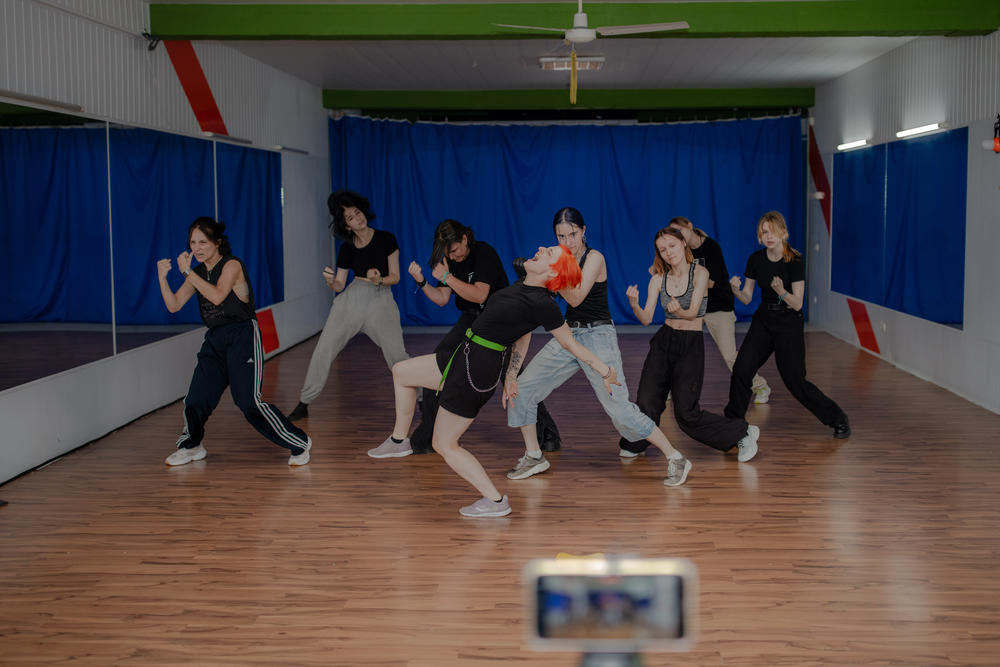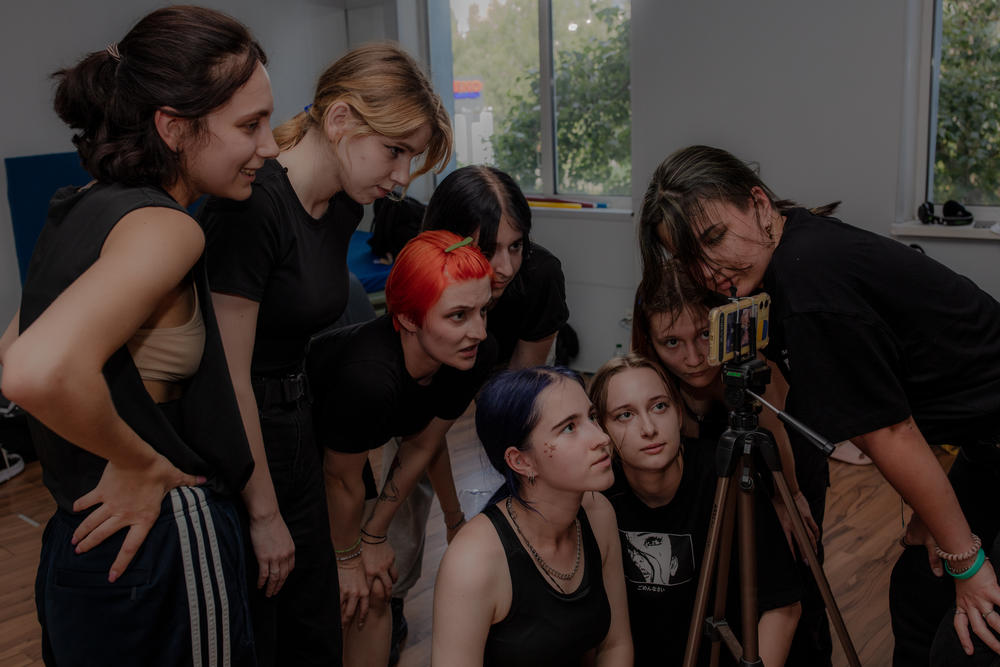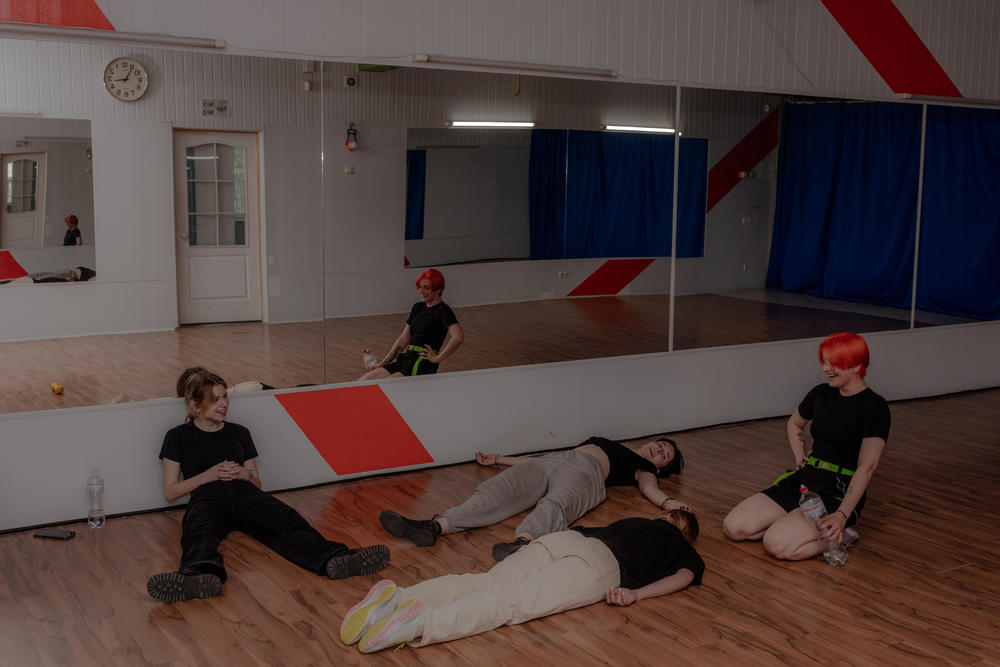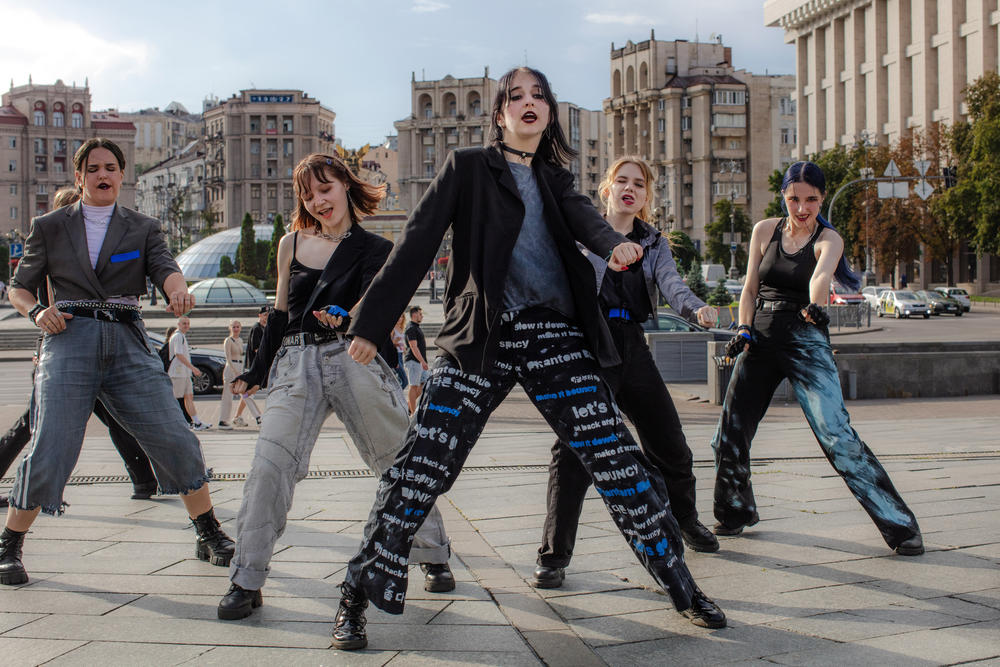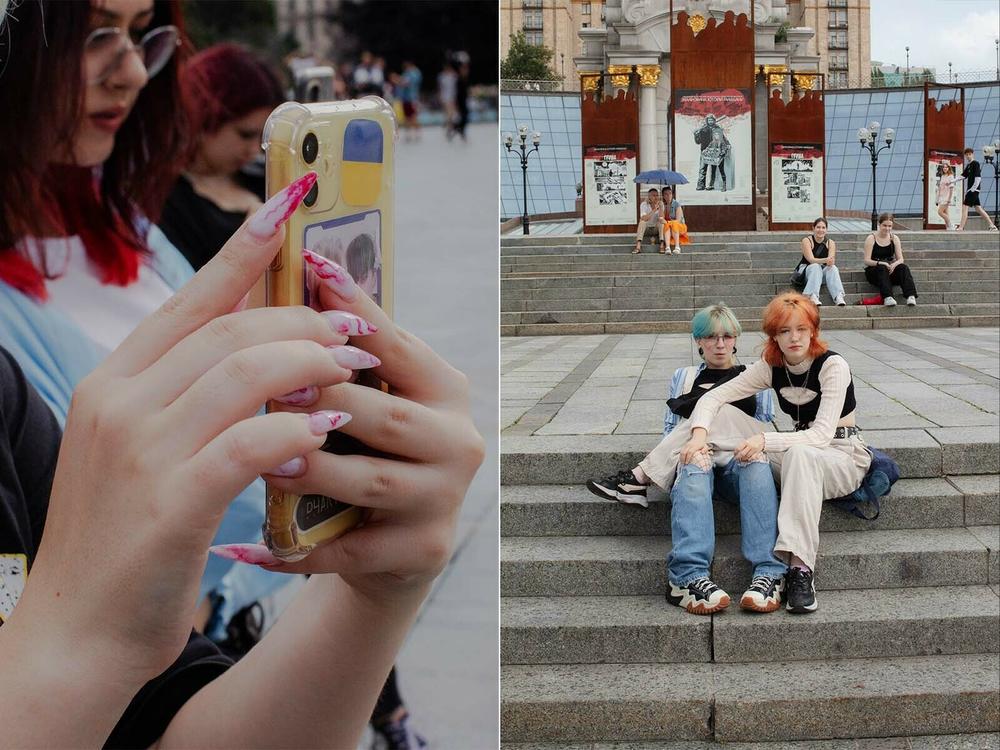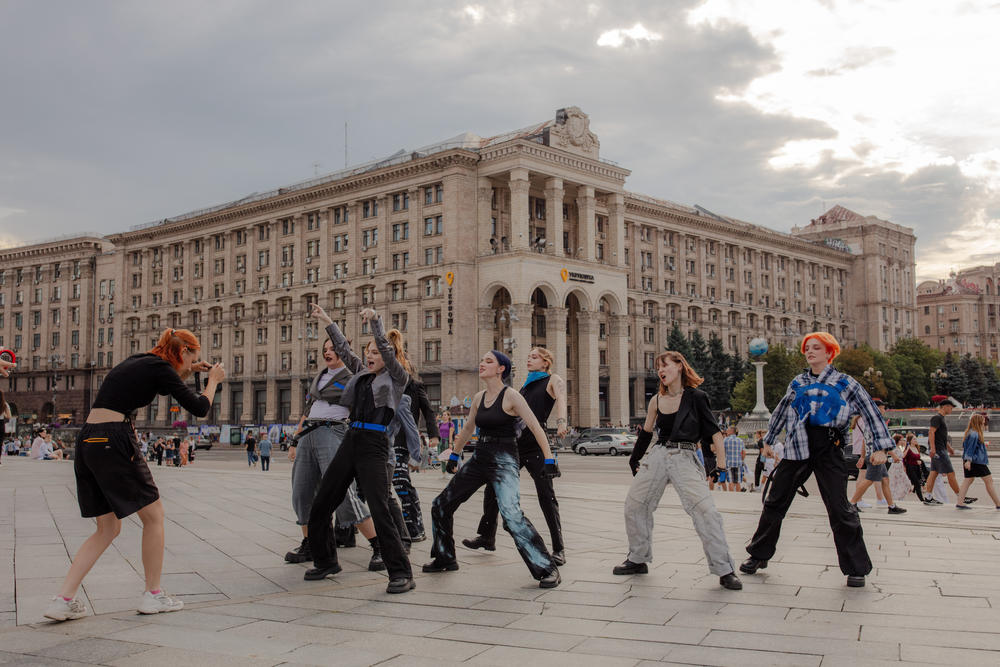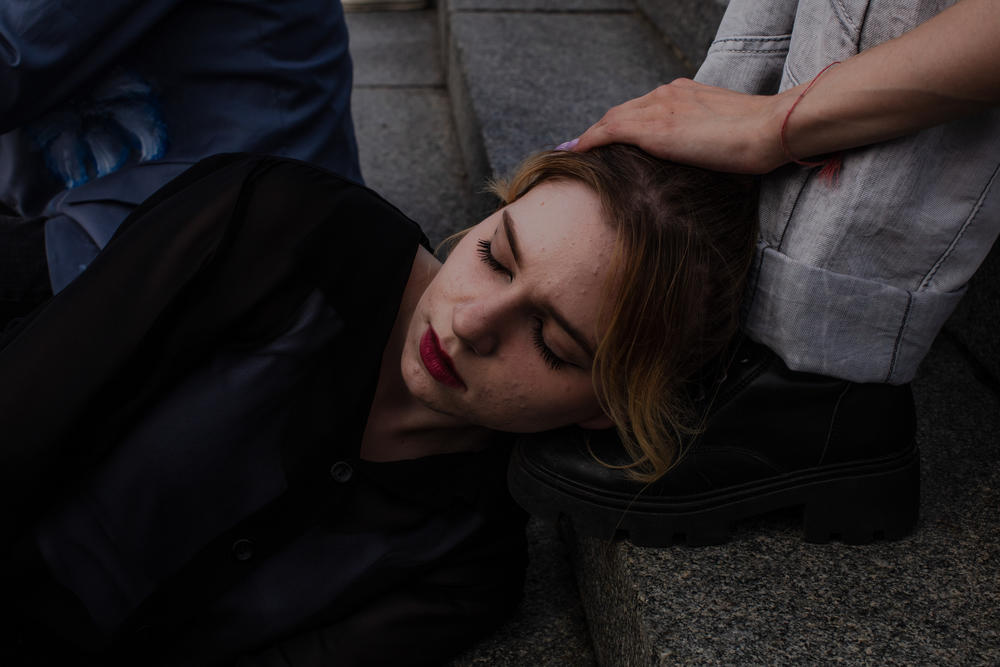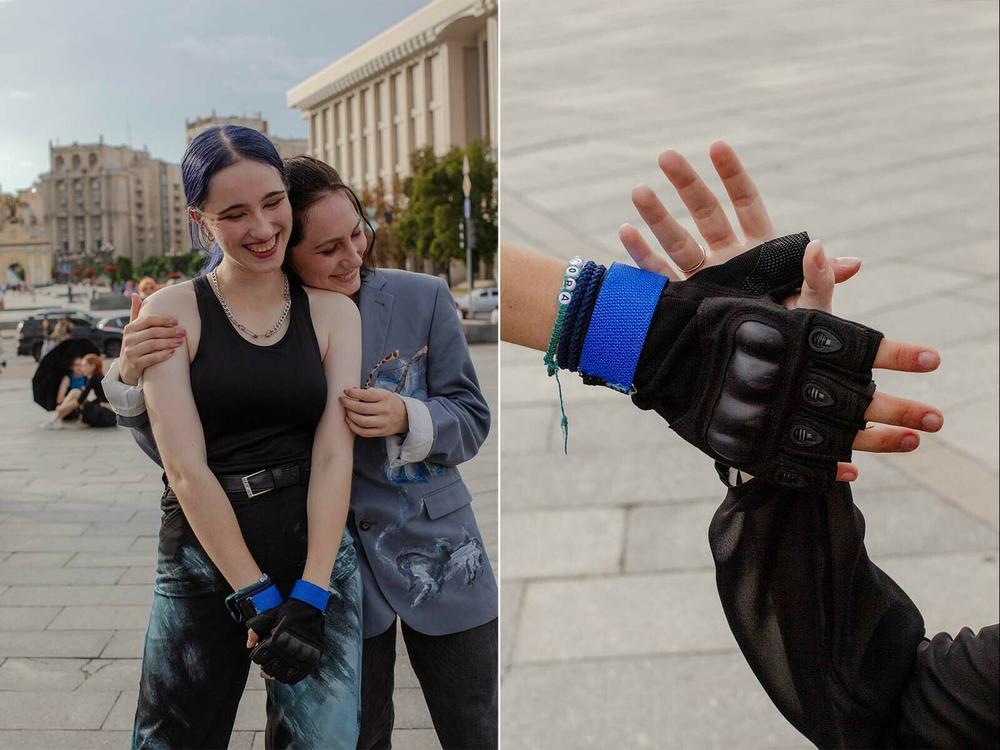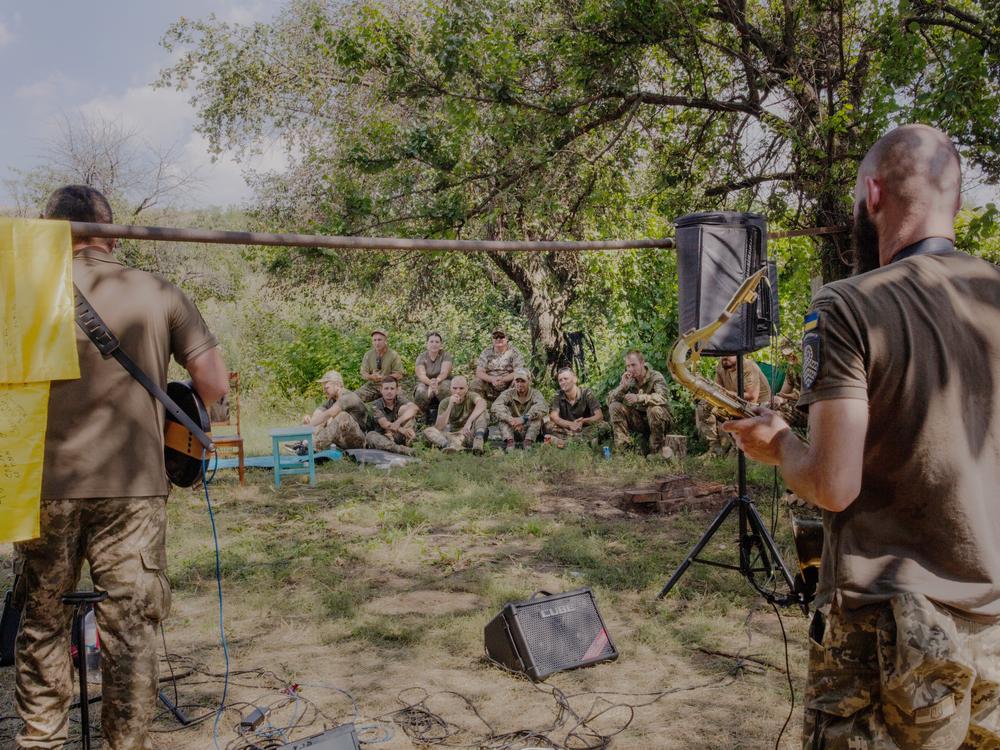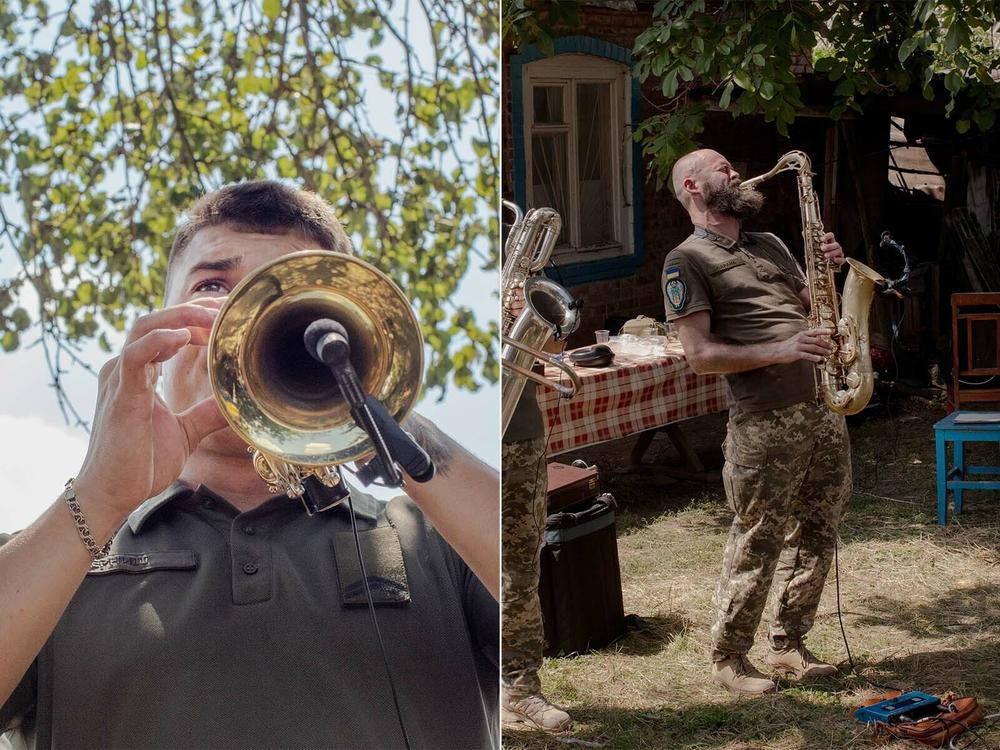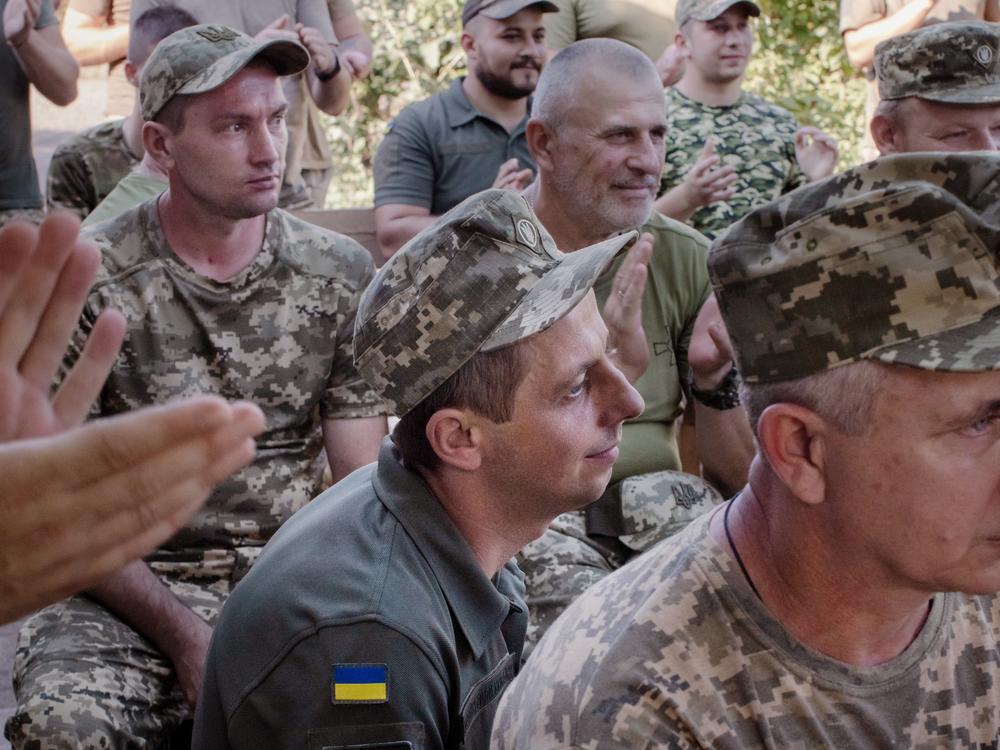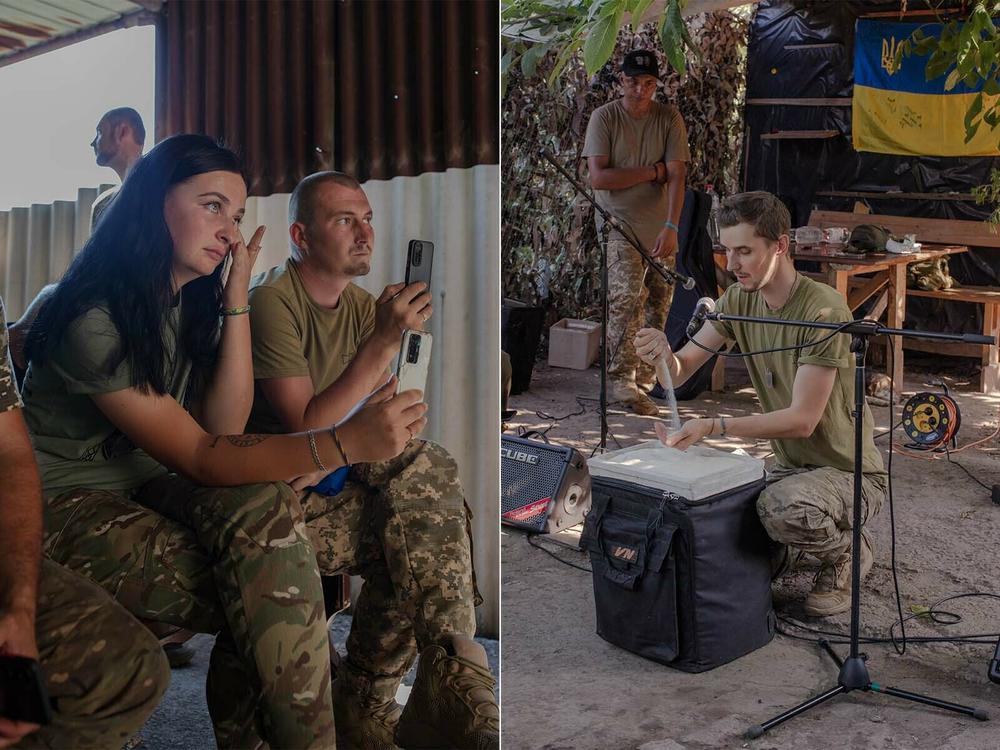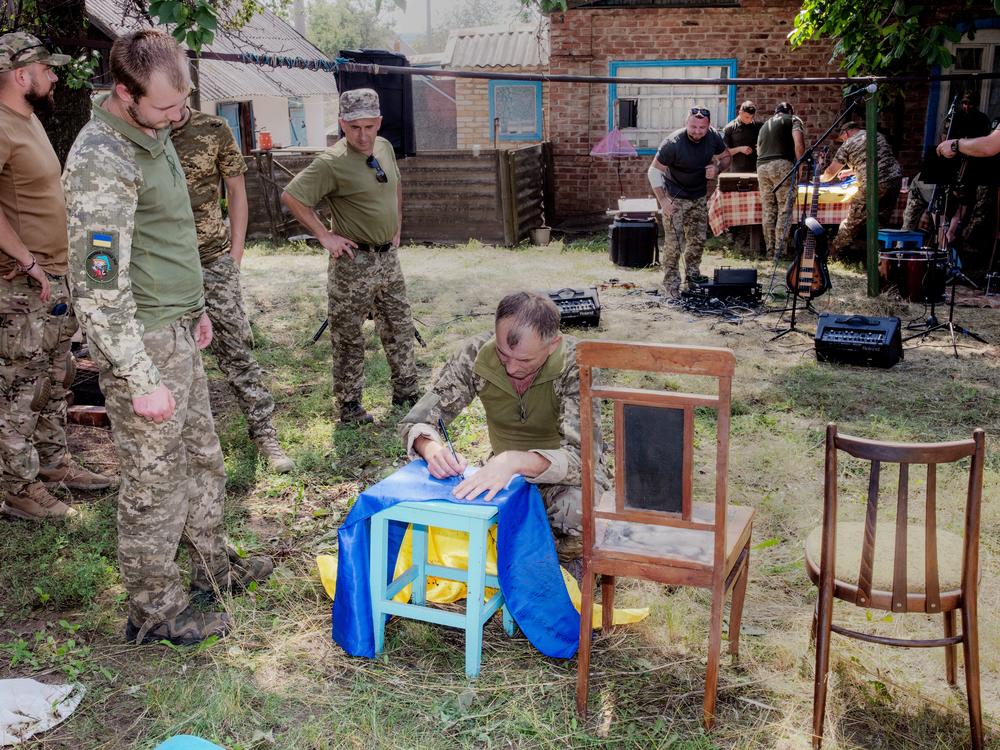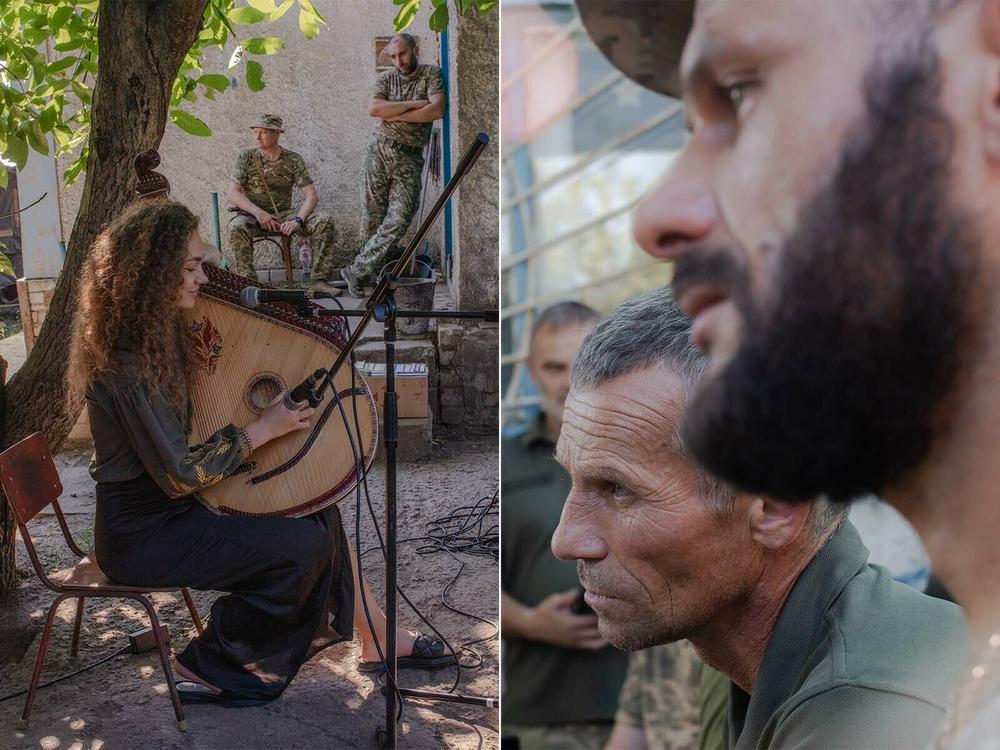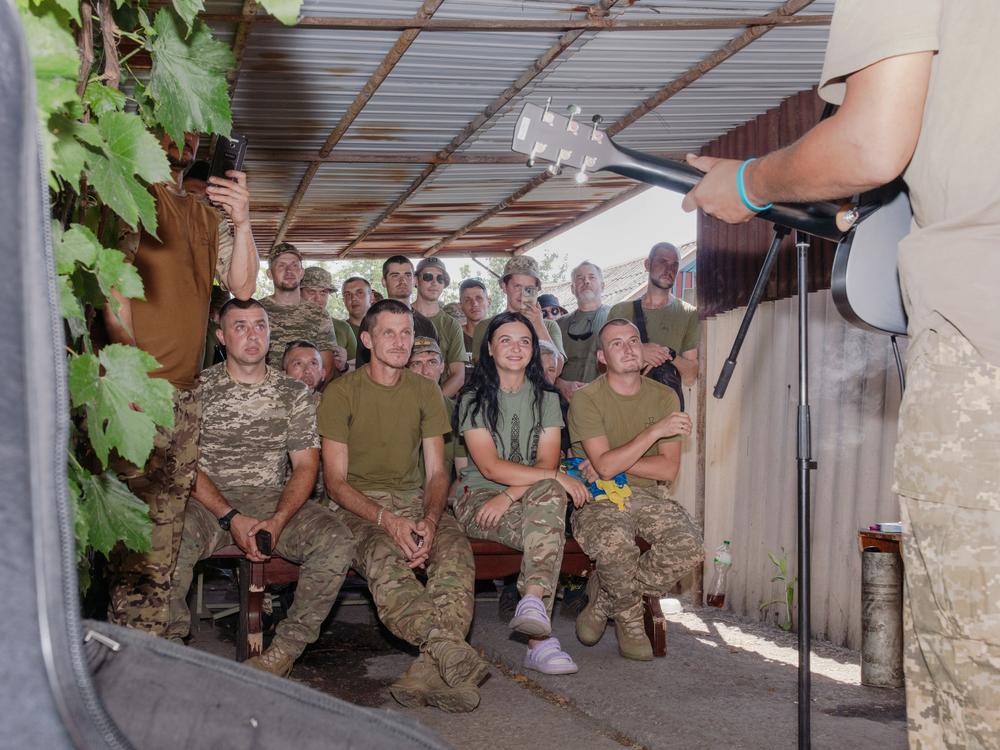Section Branding
Header Content
How these Ukrainian artists are using their talents to support the war effort
Primary Content
In an auto garage in an industrial district of Kyiv, Ukraine, the workers are busy. Damaged cars are hauled through the gates at regular intervals with shattered windows and gouged bodies. Cars are pieced together, windows replaced, holes patched. Others come in intact and go straight to the back for a makeover, where four men in respiratory masks sweat as they work in a haze of aerosol paint, covering each vehicle in unique combinations of green, brown, gray and auburn with the practiced, fluid movements of their spray cans.
Before Russia’s full-scale invasion of Ukraine in February 2022, this was a regular auto body shop, and the painters were one of Kyiv’s well-known graffiti crews, ETC, painting buildings and murals. Now, the graffiti writers work full time to camouflage cars for their military before they send them east.
The Ukrainian war effort has been cobbled together through crowdfunding and volunteer initiatives. Along with drones, medical kits and body armor, millions of Ukrainians have donated private vehicles to help transport their defenders at the front, and chipped in for the purchase of cars and trucks from abroad.
Like so many Ukrainians, Neak, 43, one of the painters, asked himself what he could do to best support the military when the full-scale invasion began. He quickly realized his expertise with graffiti allowed him to perfect the complex art of obscuring vehicles from snipers, artillery and the electronic eyes of Russian drones. He’s asked to be identified only by his graffiti name to protect his safety and the safety of their project.
For most of the past two years, ETC has painted nearly five days a week. They estimate they’ve done over 600 cars, several tanks and recently a helicopter. They do the work on a volunteer basis and fundraise their own materials for the cause when they need to.
“There are no true blacks or whites in nature, so we’re careful to cover those. Anything shiny — a mirror or piece of metal — might attract snipers,” Neak explains. Sometimes, they travel to the front themselves to paint tanks and larger vehicles to better match the changing seasons or a new location.
He often chats directly with the soldiers who will use the car in order to get the colors right. “I ask what direction — south or east, because east is more green forest, and south is more like desert; still green, but more brown and terracotta. In Donbas, the soil is reddish. No two cars are the same,” Neak says. He laughs — sometimes, it’s hard to extract the palette from these conversations. “They say, ‘Here there is a lot of dirt,’ and I say, ‘OK, but is it red or brown or gray?’ They say, ‘It’s dirt!’ Then I maybe ask for a picture.”
Too often, they see the cars they’ve painted come back in pieces, and after they’re repaired, they start over. With many friends and former crew members fighting at the front, they try hard to focus on the job they can do and how it helps. As the war drags on, many of the painters have left the craft to fight at the front lines. Currently there are only two ETC members left painting in Kyiv, the rest are fighting.
In Maidan Square, in central Kyiv, pedestrians hustle across the sprawling plaza to and from work. People line up at kiosks for coffee and hot dogs. Couples eat ice cream and shoppers mill in and out of nearby stores. Girls sell bracelets to raise money for the armed forces and families pay their respects at a memorial made up of thousands of Ukrainian flags planted in the ground, each representing one of the country’s fallen soldiers. In February, Ukrainian President Volodymyr Zelenskyy announced that about 31,000 Ukrainian soldiers had died since the full-scale invasion began, but many believe the actual number is higher, and has certainly climbed dramatically in recent months. Many fallen soldiers began their fight in Maidan 10 years ago, when the “Revolution of Dignity” ousted Russian-backed President Viktor Yanukovych and Russia responded by annexing Crimea, beginning the decades long conflict that escalated with Russia’s full-scale invasion.
Perched on a wide terraced staircase on the square, a group of about 15 teenage girls moves in and out of choreographed formations with practiced ease in coordinated outfits. They dance and lip-synch directly into a camera mounted on a gimbal as a K-pop track loops from a portable speaker. At the end of each take, they cluster around the camera’s LCD screen to play back their performance, scanning for mistakes in their choreography and giggling.
The girls go by Phantom Blue and they’re part of an international community who do K-pop cover dances. They mimic the choreography and styling of K-pop tracks, tape them in public places and compete online for views and likes.
For each cover, the dancers rent a rehearsal space and drill the moves to perfection, and make unique costumes with specific concepts and themes, as well as outtake videos and games to play for their viewers. They choose stage names and favorite talismans and accessories, and friends, partners and families come out to help with cameras, hair, makeup and snacks. They repeat the dance over and over until their leader, Yulya Batrak, who goes by Kora, deems it perfect, as they attract curious and admiring stares from hundreds of passersby. On this stormy day in Kyiv, they danced in a light drizzle and then scurried under umbrellas to protect their cameras and makeup until the clouds passed and they could start again.
Crews like this can be found in public spaces and video-sharing platforms all over the world, but under Phantom Blue’s videos, there’s always a link to a crowdfunding platform where the group’s supporters can donate money for Ukraine’s military. Their takes are often interrupted by air raid sirens and sometimes the sound of Kyiv’s formidable air defense system. When asked how many members had friends, partners or family in the military, the answer came with lowered heads and sad eyes — pretty much everyone.
Kora, the team’s 20-year-old leader, says she sometimes feels like she’s “living a divided reality. I’m dancing and I feel normal, then you open your phone and Russia has bombed another city … but dancing helps us keep calm. Life goes on and war goes on, but when we’re dancing, we feel we have courage and power.”
The Cultural Forces: Music on the front lines
As Ukraine now enters a difficult summer with international aid wavering and Russian attacks grinding away at its territory while terrorizing its cities, there is a pervasive recognition of the increasingly important role the arts can play practically and psychologically at combating the invisible wounds the nation faces, collectively.
In Novohrodivs’ka, a village in eastern Ukraine, soldiers of all ages have faces creased with the weight of recent fighting. They sit in the shade of abandoned fruit trees outside a home whose owners have long since fled west. There’s an eerie stillness across their facial expressions, something beyond weariness, something vacant and painful.
As they wait, I sense that time moves differently here. Maria Petrovska emerges from a shed behind a tree, in an olive green Ukrainian Vyshyvanka blouse, holding a bandura, a Ukrainian instrument somewhere between a lute and a harp, and she slowly begins to draw a soothing melody from its strings.
Heavy eyes sharpen on her as her voice joins the chords. There’s an occasional rumble of outgoing fire less than a mile away, but everyone here is used to that. Petrovska, who chose to come home to Ukraine on break from her studies at BIMM Music Institute in Manchester, England, begins to sing to the crowd of maybe 40. Their tired bodies begin to lean forward. She closes her eyes as she sings the first song, a traditional Ukrainian love ballad, and the soldiers begin to thaw. One loosens his grip on the automatic rifle in his lap and his hard jaw softens. The second song is defiant and patriotic and a few crack smiles. When she plays Leonard Cohen’s “Hallelujah,” a few wipe tears from their eyes. I hesitate to photograph the moment because it feels sacred, but nobody seems to mind as I lift my camera.
Petrovska is followed by Valery Dzekh, who tells a story of duty and redemption through a surprising medium for the front lines: puppets. The artist from Kharkiv and son of a soldier weaves a story meant to inspire defenders to keep fighting when morale is low, through the movements of handmade figurines in a small pit of sand sculpted by his wife back home. The day ends with a more upbeat performance from a brass band, all wearing fatigues. The music gets raucous enough that I worry about the noise we’re making just a couple of miles from the front, but I’m comforted that none of the people here who know war far too well seem to be concerned.
The musicians are part of a program called the Cultural Forces, an initiative founded by Mykolai Sierga, a famous Ukrainian musician and TV personality, that brings Ukrainian artists and musicians together to perform and raise morale for fighters from the front lines to military hospitals. The troupe of musicians and artists tour the front lines in a hot van, giving several concerts a day to brigades who have often just returned from heavy fighting.
This project was supported by the International Women's Media Foundation.
Natalie Keyssar is a documentary photographer based in Brooklyn, New York. See more of her work on her website nataliekeyssar.com or on instagram @nataliekeyssar.
Photo edit by Grace Widyatmadja. Text edit by Zachary Thompson and Alex Leff.
